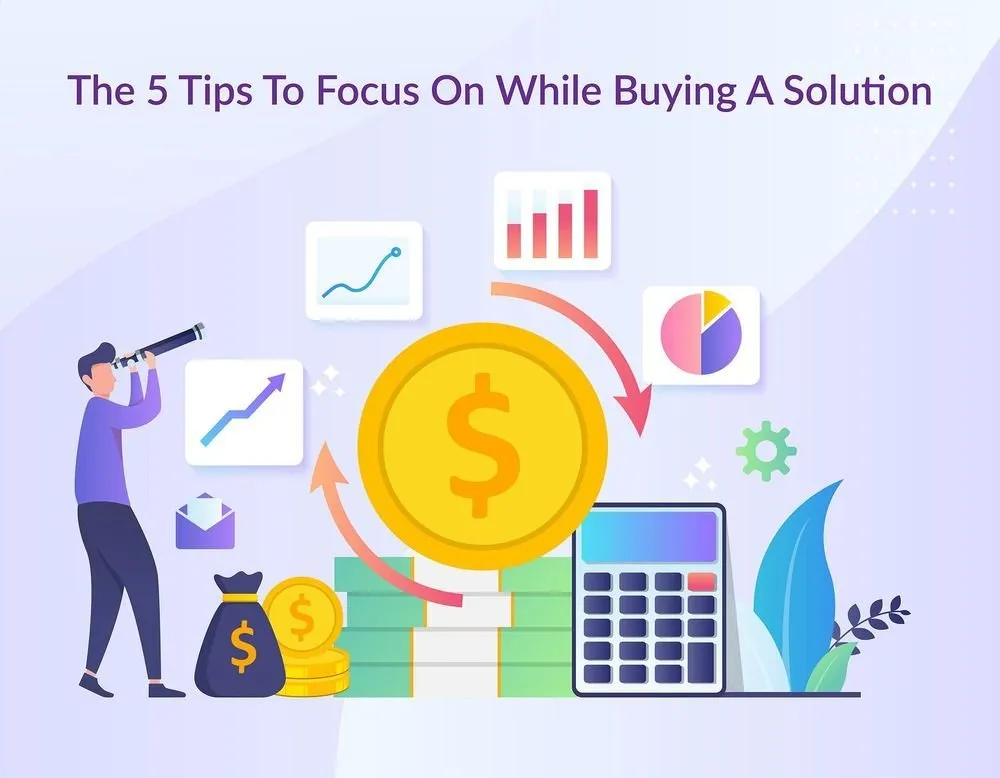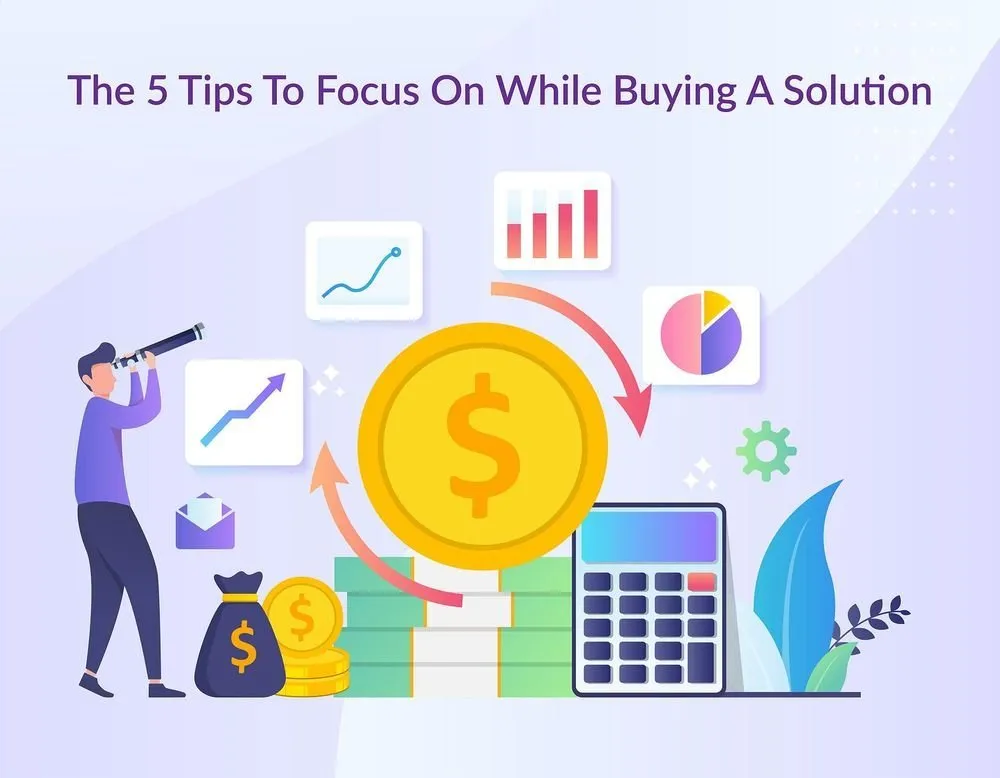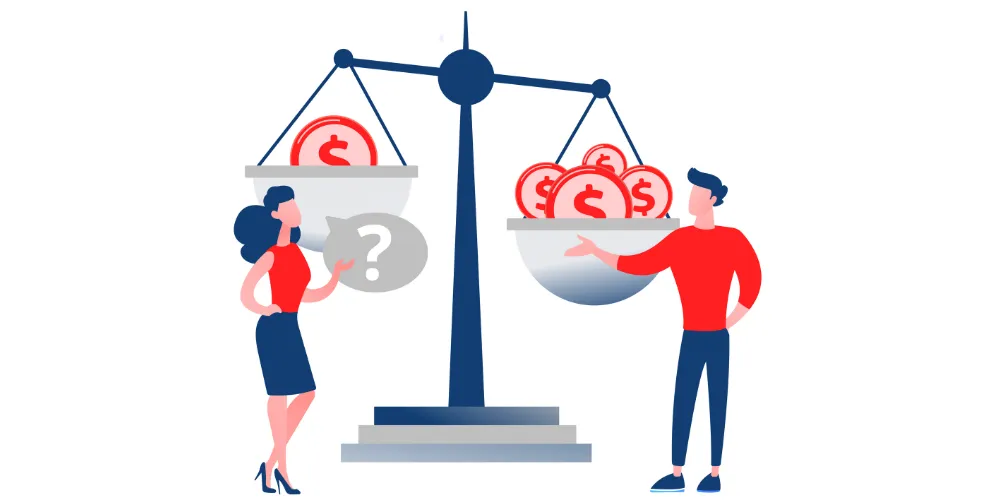Measuring salesforce effectiveness involves evaluating how well your sales team converts opportunities into revenue. Key factors include win rates, quota attainment, customer acquisition costs (CAC), and sales cycle length. Regular performance reviews, CRM analytics, and sales pipeline analysis help assess individual and team productivity. A well-optimized salesforce should consistently achieve revenue targets, maintain strong customer relationships, and maximize efficiency in closing deals.
Importance of Sales Force Effectiveness and How to Measure it
- Sujeet Pillai
- Sep 08, 2022
- 4 min read
- Last updated on Apr 07, 2025
Introduction
There's a difference between efficiency and effectiveness. While efficiency measures the rate at which you perform a certain task, effectiveness measures the impact of the tasks performed. Thus, a highly efficient team can still be an ineffective team if the tasks they are performing are of no use. This is why a lot of companies misunderstand what sales force effectiveness really is and how they can improve it. Sales managers measure metrics like quota attainment and win rates for their team, but those are not the same as measuring sales force effectiveness.
Your sales team broke the record for making the most sales in this quarter. Everyone in the sales team performed well and surpassed their quota. Not just the number of successful sales increased, but the number of calls also increased. However, even with such grand sales, there wasn’t much change in the revenue generated this year compared to the previous year. This is a case where your sales efficiency increased significantly, but the sales effectiveness didn’t change much.
But what is sales effectiveness? And how is it different from sales efficiency? Shouldn’t more sales mean more revenue?
Not necessarily. Selling more doesn’t imply an increase in revenue as well. It depends on the kind of products being sold, their profit margins, how much effort is being placed in selling the products, and the strategies being followed. It is the responsibility of the sales leaders to guide their team in a direction that is best suited for achieving short-term and long-term business goals and not just racking up sales numbers. Measuring sales effectiveness is an important step in this journey and should be adopted by sales leaders as soon as possible.
What is Sales Effectiveness?
The sales team of an organization is responsible for selling multiple products and services to different customers. To this end, they employ several different methods and strategies to achieve the most penetration and conversion. Sales effectiveness measures the efficacy or potency of these methods to determine whether the sales activities and numbers are helping the organization or not.
In an organization, the quantity of sales doesn’t matter much compared to the impact of the sale. Your sales team can successfully sell a million copies of a low-margin product, but if your business objective was to increase margins and generate more revenue, those million sales hold little to no value. Sales effectiveness will give you a complete measurement of how your sales team is performing and whether they are meeting their goals or not.
A clear understanding of sales effectiveness is important to growing an organization and driving more revenue. It highlights the areas where your organization is lacking and where it is performing exceptionally well so that you can create sales strategies that target these factors. While a robust marketing campaign and increasing awareness among the target audience matter, nothing is more important for a business than sales.
It is vital for businesses that want to improve their sales and onboard new customers to monitor their sales efforts. Sales managers can use the motivational power of incentives and variable compensation to encourage sellers to work hard and not only meet their targets but also complete effective sales. There are several different metrics that a sales manager can use to evaluate their sales strategies and the sales team.
What is Sales Force Effectiveness?
Sales force effectiveness (SFE) measures how efficiently a sales team converts opportunities into revenue. It assesses the ability of sales reps to achieve key business goals, whether that’s onboarding new clients, meeting revenue targets, or improving customer retention. An effective SFE model ensures that sales teams follow structured processes, use data-driven strategies, and continuously refine their approach. Beyond just hitting quotas, it also considers sales force efficiency—how well sales reps utilize time, resources, and efforts to maximize results.
SFE requires collaboration between sales, marketing, and leadership to refine messaging, improve training, and enhance customer interactions. By continuously tracking and improving sales processes, skills, and strategies, businesses can maximize their return on investment in sales operations, ensuring sustained growth and profitability.
Sales Effectiveness Metrics Worth Measuring
Sales is a mixture of art and science, and while art can differ from person to person and is very difficult to quantify, the science part can be measured easily and accurately. Here are a few metrics that will give you an insight into your sales effectiveness and areas for improvement as well.
1. Percentage of the Team Achieving Quota
Any organization would want the majority of its sales team to hit the quota or target regularly. However, this could have an inverse effect as well if it’s not managed correctly. For instance, if more than 90% of your sales team is able to achieve their quota every month, you might be losing money rather than being in profit. This means that the target is not challenging enough for the sales reps and they are able to achieve it easily. And since the quota is achieved, they tend to reduce their effort in generating more sales as well.
However, if the percentage of the sales team hitting their quota is too low, it can demotivate the entire team and damage their morale. If they feel like the targets are impossible to achieve, they can give up on the deals too quickly rather than fighting for them. This is why it is important to measure the percentage of your sales team that is able to achieve the quota, as it helps maintain a competitive spirit among them.
2. Win/Loss Ratio
In the sales game, there are bound to be some losses as well. It is not possible for any sales rep to close every deal in the pipeline successfully, no matter how good their product or selling skills are. But a lost deal doesn’t just mean a loss of business opportunity, it can be considered as a learning experience for the sales reps and the sales team.
The win/loss ratio gives an analytical insight into how your sales strategies and sales reps are working and whether you are going in the right direction or not. If the win rate increases, it means that the sales rep has employed the correct sales strategy and that you’re moving in the correct direction. If the loss ratio increases, however, you can understand that either the sales strategy is not that effective or the sales rep is not putting in that much effort. Ineffective team members and sales strategies should be addressed quickly.
3. Deals by Lead Source
While some customers might contact you directly to buy a product or service, most of your customers are converted from potential leads. Leads can come from different sources and are the building blocks for future sales.
Thus, it becomes important for organizations to analyze lead sources closely. This will help direct the sales team to the most lead-generating territories, allocate the marketing budget, improve sales forecasts, and streamline sales efforts.
4. Percentage of Qualified Leads
Just like every lead won’t go on to become a successful sale, every lead is also not worth pursuing. This can be understood by the fact that some of the users visiting your website are not potential customers but are just there to gather information and maybe to write their own articles. It is hence important to analyze every lead and their intent so that qualified leads can be identified quickly and the sales team can work on them to close a deal.
5. Revenue from New Business vs Existing Customers
While it is important for any business to keep attracting new customers by selling their products and services, they need to keep their existing customers in check as well. Contacting and converting new leads is not only time-consuming but can be five to seven times more expensive as well.
Sales teams and managers should monitor revenue generated by new customers compared to existing customers. A sustainable business achieves a majority of its revenue from existing customers as they perform repeat business. However, if most of your revenue is coming from new customers, you might need to rethink your sales strategies and analyze why you are unable to retain customers and what is driving them to not do business with you again.
6. Your Most Important Customers
There is a Pareto principle that says 80% of your output comes from just 20% of the work. This adage can be applied to the sales domain as well, with 80% of your revenue coming from 20% of your customers. The actual split might change according to the business, but the underlying theory remains the same, and you should understand that only a select percentage of your customers are needed to do a majority of the business.
It is essential to analyze who those select customers are, their demographics, and what makes them buy your products. This will give you insight into where your marketing efforts should be targeted and how much money you need to spend to get the most business. It will also prevent you from spending a lot of money on a smaller demographic.
How to do a Sales Force Effectiveness Assessment?
A few crucial metrics help sales managers measure the effectiveness of their sales force in their business.
1. Sales Team Activities
While the sales efforts matter for sure, the velocity of sales is important as well. There first needs to be a benchmark against which you can measure the fluctuations in the sales team activities. This will give you a quantitative and bird's-eye view of the efforts put forth by your sales team.
Keep an eye on the number of calls the team has made, emails sent, meetings booked, notes logged, quotes given, and other sales force effectiveness metrics to ensure that your sales team is working at the maximum efficiency possible and whether they'll be able to hit the targets.
2. Length of Sales Cycles
How much time a deal spends in the sales pipeline before converting into a successful sale gives great insight into any bottlenecks in your sales process. Bottlenecks are unavoidable in a sales funnel, but identifying them early on can help solve those issues quickly.
Monitor the average length of your sales cycle and identify and address issues that are responsible for the delay in getting a successful deal. Coaching the sales team through effective solutions helps in improving sales efficiency.
3. Customer Response Time
From the moment a person interacts with your brand, they have the potential to become a potential customer. Thus, it is important for companies to be responsive and keep those leads engaged while they are still warm. If a customer is interested in a certain product and a sales rep contacts them to talk about a deal, the deal has a better chance of progressing and becoming successful.
It is essential to analyze your sales team's average customer response time and how quickly they engage with potential customers. This is not limited to the first contact but also applies to any proactive follow-up calls or meetings.
4. New Customer Acquisition Rates
Acquiring new customers regularly is essential to keeping a business going. Accurately measuring this metric gives insight into the efforts your sales team is making to find new customers.
Identifying sales territories for different sales reps beforehand makes it easy to track monthly acquisitions coming from each territory. This sectoral analysis enables sales leaders to identify any gaps in the knowledge or skill sets of sales reps and also shows which areas have higher demands than others.
5. Customer Attrition Rate
Bringing new customers is not the only important thing in business; keeping your existing customers within the community is necessary as well. It is healthy for companies to lose a few customers every now and then, but a quick loss of business opportunities can be a dangerous trend.
Keep an eye on customer turnover rates and measure them against the rate of new customer acquisition and sales growth. Identify when the customer attrition rate has reached an alarming level and what can be done to bring it down.
6. Revenue Growth and Net Profitability
Perhaps the most obvious metric for sales force effectiveness assessment. Monitoring revenue growth provides a significant indication of overall business success. While focusing on the numbers is important, there should be room for some flexibility in changes in customer needs, departmental issues, and more.
It is also important to remember that a rise in revenue doesn't necessarily mean that you are profitable. Implementing and managing sales strategies can cost a lot of money over time. Thus, it is important to analyze customer acquisition rates, operating expenses, customer attrition rates, and other expenses adequately.
Importance of Measuring Sales Force Effectiveness in Business
Measuring sales force effectiveness is crucial for identifying bottlenecks and optimizing performance. By using a structured sales force effectiveness model, businesses can analyze sales strategies, pinpoint inefficiencies, and refine processes for better outcomes. Tracking key sales force effectiveness metrics helps sales leaders evaluate team performance, determine which practices yield the best results, and eliminate time-wasting activities. Improving sales force efficiency ensures that sales reps focus on high-value tasks, leading to better conversions and revenue growth.
Additionally, measuring effectiveness highlights top performers and those needing support. With insights from sales data, managers can provide coaching, training, and process improvements to enhance overall team productivity. This approach not only strengthens the sales team but also benefits marketing efforts. By understanding which strategies drive conversions, marketing teams can refine lead generation efforts, expand outreach, and improve overall business growth.
How to Improve Sales Force Effectiveness?
Enhancing sales force effectiveness requires a structured sales force effectiveness model that focuses on collaboration, motivation, and the right tools. Here’s how sales managers can drive sales force excellence:
Encourage Team Collaboration – While sales reps work toward individual targets, fostering teamwork through knowledge-sharing, coaching, and strategy discussions improves overall sales force efficiency.
Respect Different Sales Approaches – Every salesperson has a unique selling style. Instead of rigid methods, focus on results and empower reps to work in ways that maximize their potential.
Provide the Right Tools & Training – Modern sales software, personalized coaching, and continuous learning opportunities help build sales force excellence, leading to better conversions.
Ensure Clear Communication – Keep your sales team updated on targets, strategies, and organizational changes to maintain alignment and drive performance.
Leverage Incentives for Motivation – Well-structured incentive plans encourage consistent effort, keeping sales reps engaged and boosting sales force efficiency.
By implementing these strategies, businesses can enhance their sales teams’ effectiveness, ensuring sustained growth and success.
How Incentivate Helps in Improving Sales Force Effectiveness
While leading a team of only a few salespeople, a sales manager can keep a close look at how everyone is performing and where they are facing difficulties. In bigger organizations, however, keeping track of what every salesperson is doing personally can be a near-impossible task. Connecting with team members to know what's bothering them is even more difficult.
This is where sales force effectiveness management solutions like Incentivate come in handy. With data being the most important pillar on which the measurement is based, Incentivate improves the transparency of the sales force so that their activities are easily visible to the sales manager. Incentivate can easily integrate with ERP, CRM, HRMS, and other solutions to gather every iota of data about the sales team and its members.
It captures relevant information and tracks essential KPIs for every role inside the organization. It has a no-code data analytics, management, and reporting platform that anyone can use easily to track their employees' business metrics and drive innovation. With the help of Incentivate, organizations can automate data sourcing, enable schedule-based processing, and perform metric calculations at the click of a button.
Other outstanding features of Incentivate include IC plan modeling, where sales managers can simulate new plan changes and compare the output with an existing plan to see which works better. There are also integrated Business Intelligence capabilities, where organizations can create custom reports and visualize data calculations for insightful decision-making. With the help of the built-in IC intelligence and business workflow feature of Incentivate, they can create a variety of payment curves.
Incentivate's sales force effectiveness management solution is not just available for bigger enterprises; SMEs can also leverage its benefits. It enables a more than 70% reduction in the total cost of ownership and provides a 75% faster change rollout. With 256-bit SSL encryption for data at rest and in transit, you can be sure that your data will be secured according to international guidelines and requirements.
Frequently Asked Questions
How to measure Salesforce effectiveness?
What is the formula for sales force effectiveness?
A simple formula to measure salesforce effectiveness is:
Salesforce Effectiveness (%) = (Total Sales Revenue/Total Sales Opportunities) × 100. This formula helps gauge how efficiently sales reps convert leads into revenue. Other variations may include quota achievement rates or revenue per salesperson.
What are some key metrics to track sales force effectiveness?
Evaluate and track these sales force effectiveness metrics for your team:
-Win Rate – Percentage of closed deals vs. total opportunities. Quota Attainment – Sales reps meeting or exceeding targets.
-Customer Acquisition Cost (CAC) – Cost of acquiring new customers.
-Sales Cycle Length – Time taken to close a deal.
-Revenue per Sales Rep – Sales contribution of each rep.
Monitoring these metrics helps improve strategy and optimize sales performance.
How to improve sales effectiveness?
Every business is different. Its target audience, product, and sales strategy are all different. Hence, there isn’t a specific blueprint for improving the effectiveness of its sales efforts. However, there are a few points that are common across industries that can help businesses.
1) Identify the Correct Sales Process
The first step is to analyze whether your existing sales process works or warrants change. There is a saying that you can’t expect different things to happen while doing the same thing repeatedly. Sales leaders need to create a consistent sales process that works no matter the market scenario. Adapting to the market is a necessity for successful sales teams.
2) Provide Proper Training to the Sales Reps
Knowing what needs to be done and executing it are two different tasks. A sales representative can understand what a sales manager needs from him, but without proper training and guidance, he might not know how to achieve it in the first place. Continuous training is important in the sales game, as sales reps need to know the best practices for every scenario. Sales leaders can also help them with guidance and just-in-time coaching.
3) Adopt Clear Communication
Streamlining business processes and tracking the right metrics at the right time is extremely important for businesses that want to enhance the impact of their sales team. Incentivate helps increase an organization's sales effectiveness by delivering important information about the sales team and process accurately and in a timely manner.
What is the importance of sales effectiveness?
Measuring sales effectiveness can be an important aspect of a business,, and more than 65% of B2B organizations consider it their #1 challenge. In a survey done by Vantage Point Performance, 44% of sales executives feel that their company is using ineffective methods to manage their sales pipeline.
An ineffective sales process can cost millions of dollars in revenue for businesses. Lost deals, delays in contacting leads, inaccurate management of the sales team, and other factors can lead to businesses not achieving their targets regularly. In order to generate more revenue and close more deals, organizations need to improve their sales efforts and streamline processes. By measuring sales effectiveness thoroughly, they can get a clear understanding of different metrics that need to be worked on. It will also give them an idea of whether to change the sales strategy, add in more sales reps, expand the territories, discontinue a product, and more.





